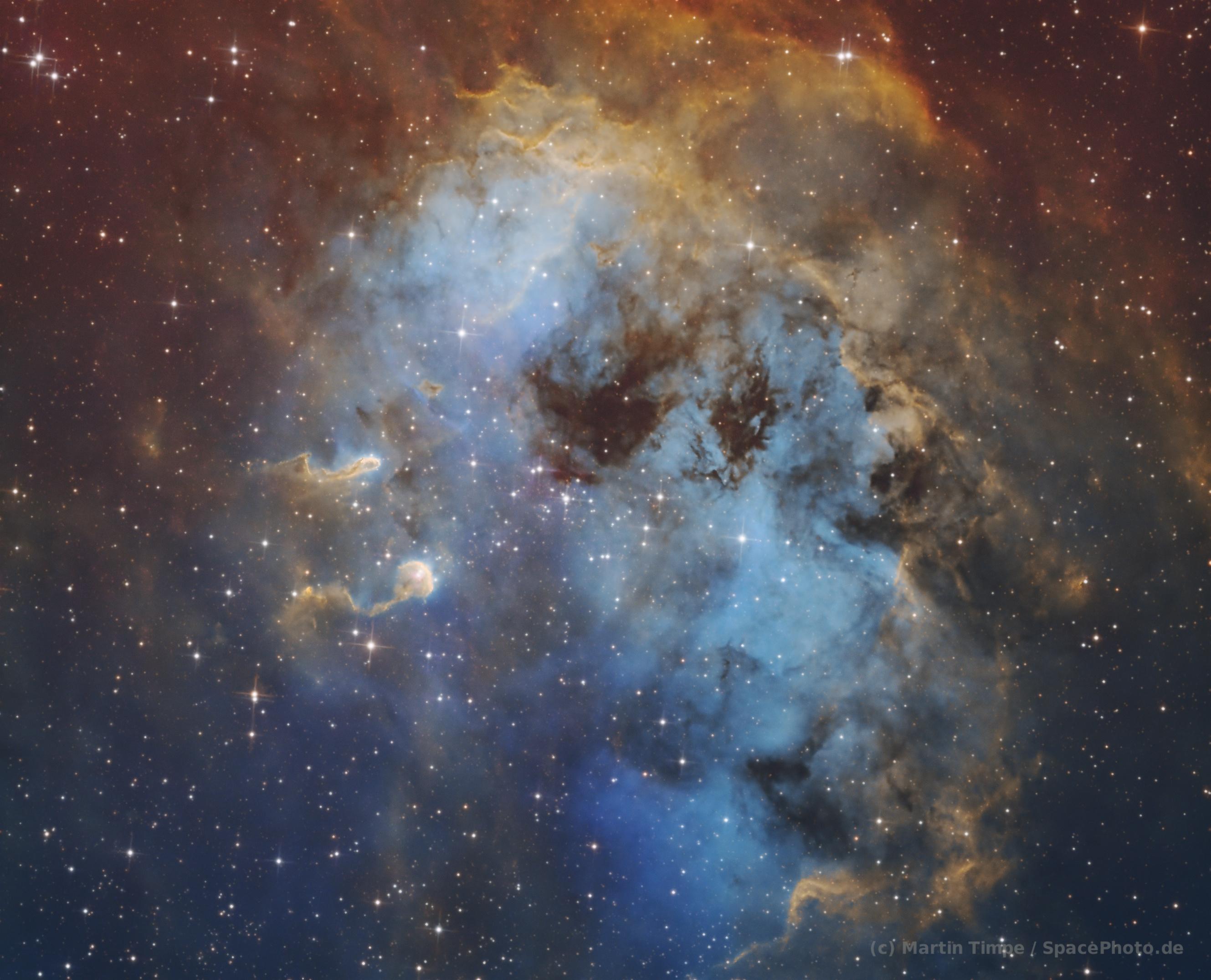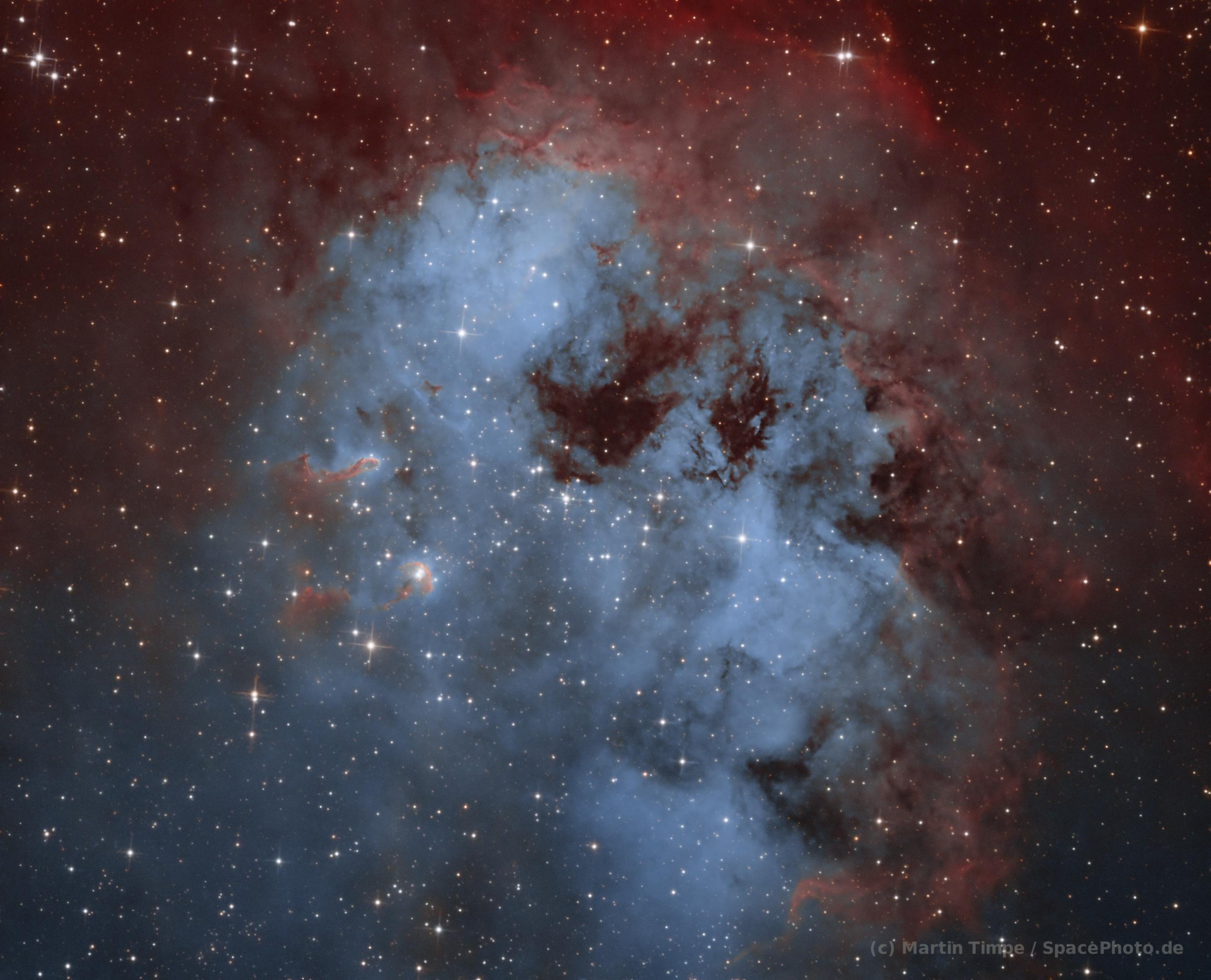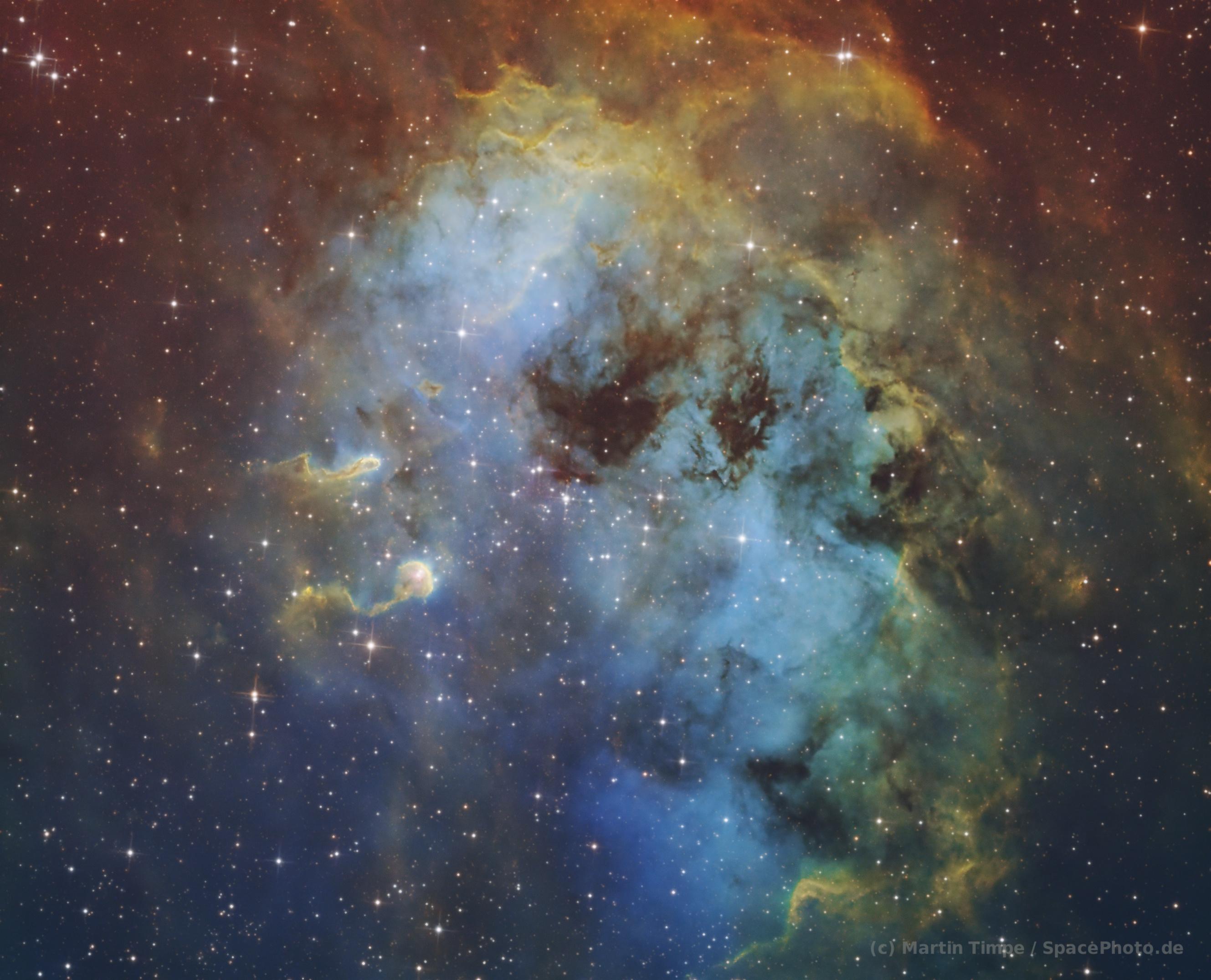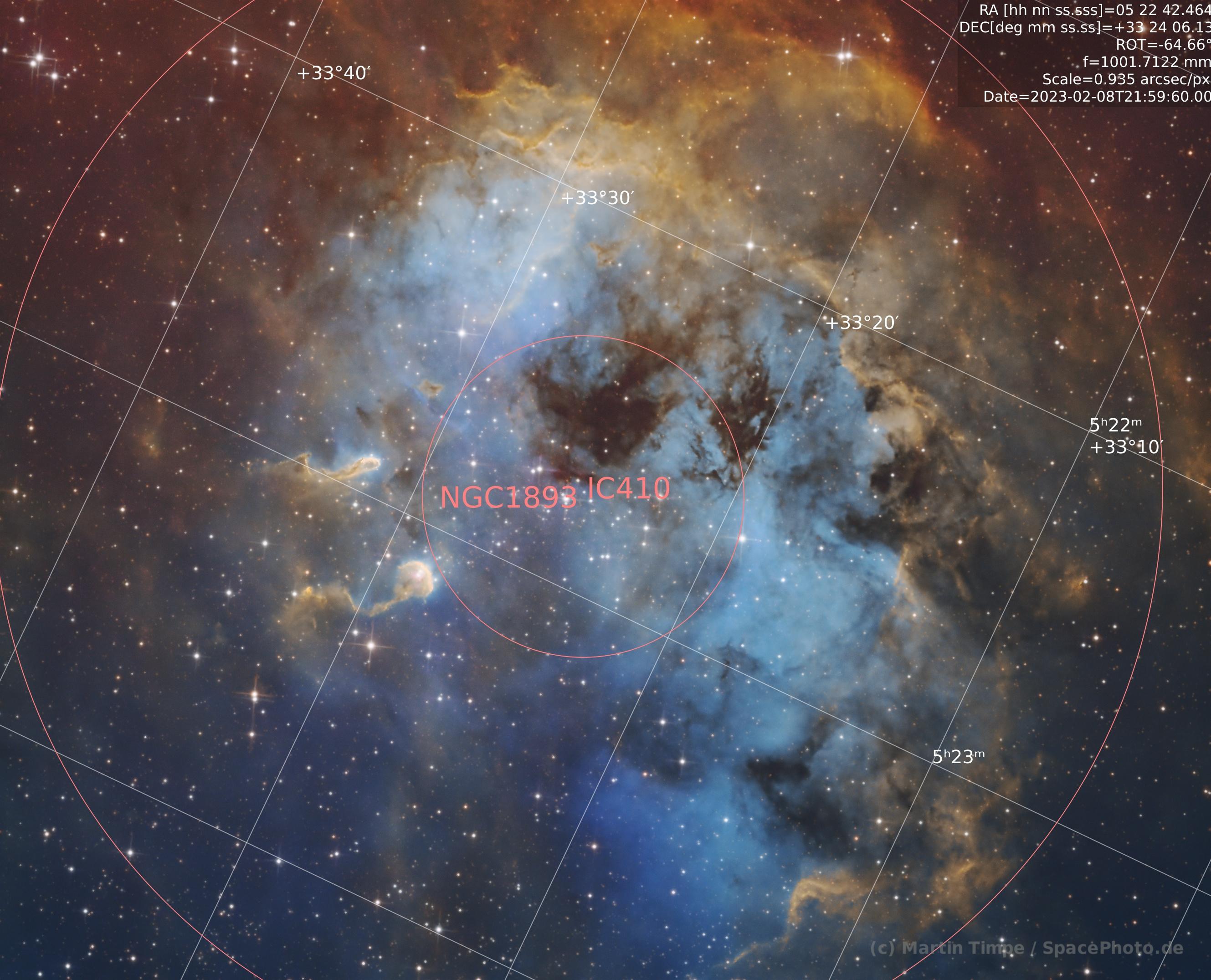Tadpoles in the Cosmic Pond: IC 410 and NGC 1893
In the constellation Auriga on clear winter nights one can find the open cluster NGC 1893 embedded in the emission nebula IC 410. While NGC 1893 can be observed visually using a telescope with proper aperture the faint nebula IC 410 is a real hard case for the visual observer and much easier to catch by photography. Due to some smaller but prominent star formation regions the nebula IC 410 is nicknamed as the "tadpole nebula". IC 410 was discovered on September 25, 1892 by the (german) astronomer Max Wolf (June 21, 1863 - October 3, 1932) while the open cluster NGC 1893 was discovered already earlier on January 22, 1827 by the (british) astronomer John Herschel (Mar 7, 1792 - May 11, 1871).

IC 410 and NGC 1893, camera Atik 460EXmono, optics Lacerta Newton f=1000mm f/4, 2023-02-08, Bad Kreuznach, Germany
What can be seen in the image is what cannot be seen visually through a telescope. The image is presented in false colors resulting from an (amongst astro-photographers widely known) image acquisition technique using narrow band filters.
The narrow band filters aim at the improvement of the signal to noise ratio of the images by transmitting only small spectral bands of a few nano meters around known, major emission frequencies of celestial objects. Doing so the ratio between real light from the celestial objects and background noise from light pollution is severely increased compared to broadband imaging techniques. It must be considered however that by the narrow transmission bands the absolute signal flux is quite low and the exposure times needs to be increased to achieve levels that provide sufficient distance to the sensor noise floor. Besides light pollution from civil sources the technique is a handy approach especially under conditions such as a lot of moon light. Both sources of light pollution were vastly present when the exposures for these images were taken on a cold February night.
Image Processing
Some affine reader might be interested in the specific processing steps of this image and I hope to be able to give some insight by the following explanations. The software used for the processing was "PixInsight" (only the watermark was added by "DarkTable"). The narrow band channels for S[II], H-alpha and O[III] are registered in that order with the color channels red, green and blue (Hubble palette). Unfortunately the signal in H-alpha outweights the other channels for most emission nebulae significantly. This usually yield a very green appearance when the channels are not treated beforehand. The overall proceeding was roughly as follows:
Calibration by WeightedBatchPreprocessingScript (using flats and bias images only with my CCD)
Linear fit of H-alpha and O[III] with the lowest mean ADU image S[II] as reference (-> to avoid green dominance in color combination)
RGB color combination, R=S[II], G=H-alpha, B=O[III]
BlurXTerminator within PixInsight on linear color image (AI - deconvolution)
StarXTerminator to separate stars and nebulosity
Generalized Hyperbolic Stretch for delinearisation
CurvesTransformation on Hue curve to shift light greens to yellow/orange and dark/blue greens to turqoise
NoiseXTerminator - as you can guess for noise reduction
Improved SCNR script by James Lamb for reduction of green color with minimum impact on luminance and contrast.
In the following image the last step was not applied and some green was allowed to remain in the image since there is no real scientific reason to ban all green from the image although most processings remove it completely.
Alternatively a H(S)OO-combination can be made, in which the H-alpha and S[II] channels were added and used in the red channel while O[III] was used for the green and the blue channel:

IC 410 und NGC 1893 H(S)OO, Atik 460EXmono, Lacerta Newton f=1000mm f/4, 2023-02-08, Bad Kreuznach, Germany
And finally in case one might wonder about the orientation or the pixel scale an image with an astrometric solution to which a map overlay was applied:

